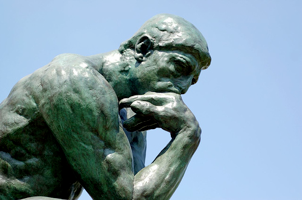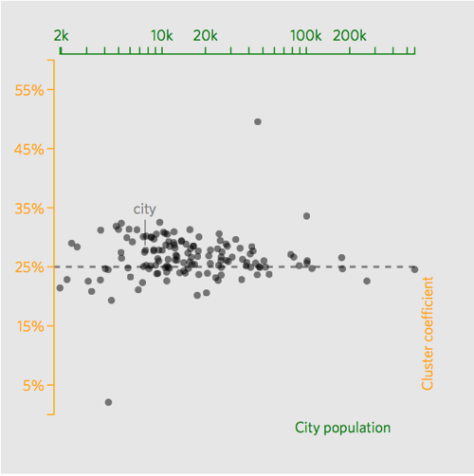[Crossposted at A Man with A PhD]
 by Brian Hillegas
by Brian Hillegas
Is Reasoning Built for Winning Arguments, Rather Than Finding Truth?
[Via The Intersection]
How is this for timing? Just as my Mother Jones piece on motivated reasoning came out, the journal Behavioral and Brain Sciences devoted an entire issue to the case for an “argumentative theory” of reason, advanced by Hugo Mercier of the University of Pennsylvania and Dan Sperber of the Jean Nicod Institute in Paris. You can’t get the article over there without a subscription, but it’s also available at SSRN, and here is the abstract:
Reasoning is generally seen as a means to improve knowledge and make better decisions. However, much evidence shows that reasoning often leads to epistemic distortions and poor decisions. This suggests that the function of reasoning should be rethought. Our hypothesis is that the function of reasoning is argumentative. It is to devise and evaluate arguments intended to persuade. Reasoning so conceived is adaptive given the exceptional dependence of humans on communication and their vulnerability to misinformation. A wide range of evidence in the psychology of reasoning and decision making can be reinterpreted and better explained in the light of this hypothesis. Poor performance in standard reasoning tasks is explained by the lack of argumentative context. When the same problems are placed in a proper argumentative setting, people turn out to be skilled arguers. Skilled arguers, however, are not after the truth but after arguments supporting their views. This explains the notorious confirmation bias. This bias is apparent not only when people are actually arguing, but also when they are reasoning proactively from the perspective of having to defend their opinions. Reasoning so motivated can distort evaluations and attitudes and allow erroneous beliefs to persist. Proactively used reasoning also favors decisions that are easy to justify but not necessarily better. In all these instances traditionally described as failures or flaws, reasoning does exactly what can be expected of an argumentative device: Look for arguments that support a given conclusion, and, ceteris paribus, favor conclusions for which arguments can be found.
Behavioral and Brain Sciences contains not only the paper by Mercier and Sperber, but also a flurry of expert responses and then a response from the authors. SSRN does too, and there is a site devoted to this idea as well.
[More]
Anyone who has seen a debate between a scientist and a creationist knows of this dynamic. Most creationist’s arguments take the form of legal rhetorical debates while scientists argue from a very different perspective. They usually present information and try to enhance the knowledge of the those around so they can make their own decision. Creationists argue to support their views using the same sorts of techniques used to validate a guilty verdict. The goal is not to impart information but to drive a decision using the best argumentative tools.
Science does not work that way. At least it tries not to. Thus is often loses in these reasoning sessions.
I would argue that the idea of reasoning used in this report is a very different one than a scientist would use when saying reasoning. Not that I disagree with its point and the idea that these sorts of reasoning arguments in a social setting could be very important for human survival.
But science – our tool for understanding the world around us – has spent the last 400 years moving away from these sorts of arguments and approach to reasoning. Science is not decided by who has the best argumentative personality or knows the best tricks of rhetoric. It is decided by facts that represent the natural world, not just our logical arguments.
Some of the most dramatic debates in science history actually rely on these sorts of reasoning arguments. The debate between Huxley and Wilberforce is one of them. Or Darrow and Bryan.
But these great debates are only remembered because the science was right, not that the argument was.
A large part of the modern scientific enterprise is to reduce this sort of reasoning to a minimum. Not that it is gone in the least. Scientists often use every single aspect of reasoning when discussing their work. But there have to be facts and a real connection to reality.
No matter how forcefully Pons and Fleischmann ‘reasoned’ about cold fusion, it did not make it real. That is why virtually every scientist will lose in a reasoned debate with a lawyer on a topic. We recognize that no matter how strong our arguments are, nor as data-filled, they will always be provisional at same level. That weakens them in a debate with someone having a hardened argument
There will always be a segment of grey, no matter how well defined the rest is. Reasoning from that viewpoint will almost always lose in a debate with someone who can argue from only a single shade.
When framed as a black and white debate, having shades of gray make you look weak along with your argument.
To win such a reasoning argument, a researcher often has to take a rhetorical position that is somewhat anathema to their viewpoint.
They have to remove the shades of grey that all researchers know exist. They must argue from a black and white view. But this often alienates other researchers while not really providing a satisfying argument.
I think this is why so many scientists are poor communicators – not when it comes to talking about the science but when it comes to arguing about decisions.
Science takes data and creates information. Transformation of information by the sorts of reasoning mentioned above results in knowledge. Knowledge allows us to make decisions. Wisdom is about making the right decision. Science can helps us with knowledge by providing information but it cannot always prevail in a purely rhetorical setting. It is good at creating information but not well prepared for the transformation of information into the knowledge needed to make a decision.
Perhaps what researchers need is not better communication skills but better training in how to present their scientific arguments in this sort of arena of reasoning – helping transfer the information they create into the knowledge needed to make the decisions in society.
I think this is where Mooney and Nisbet’s ideas of framing come from. Not to deny the science or to ignore the facts. But to find a way to permit scientific arguments to get a fair hearing in these sorts of argumentative settings that determine just what decisions get made.
We are working on getting researchers to be better presenters and speakers of their science. We need to actually be training them how to enter these reasoning arguments in a way that can benefit us all. Because their attempts at the moment are ham-handed and not helping move us forward.
They need to be given a rhetorical arsenal that allows them to enter these reasoning sessions that will be crticial for our survival.







 by
by  by
by  by
by 

